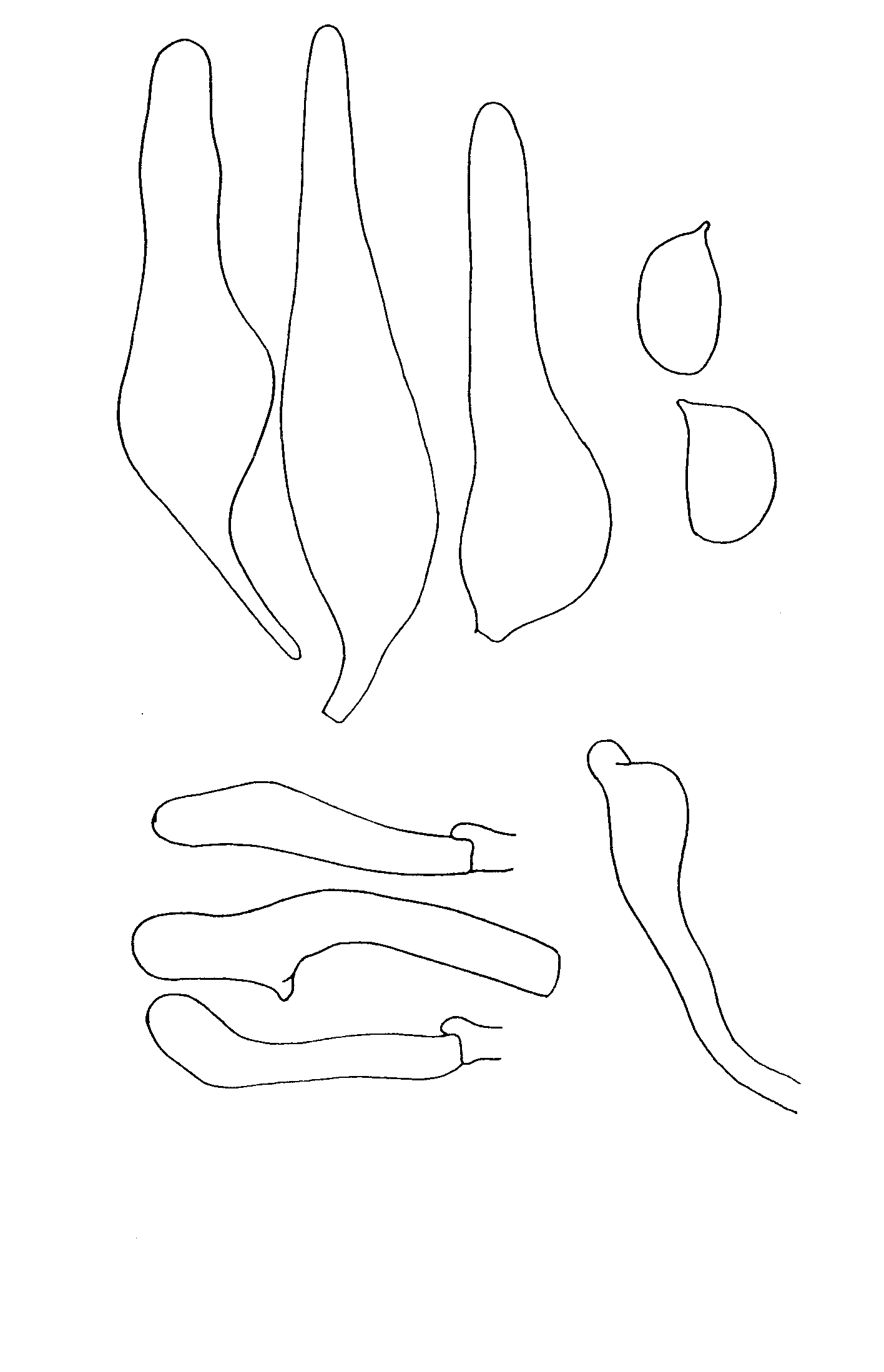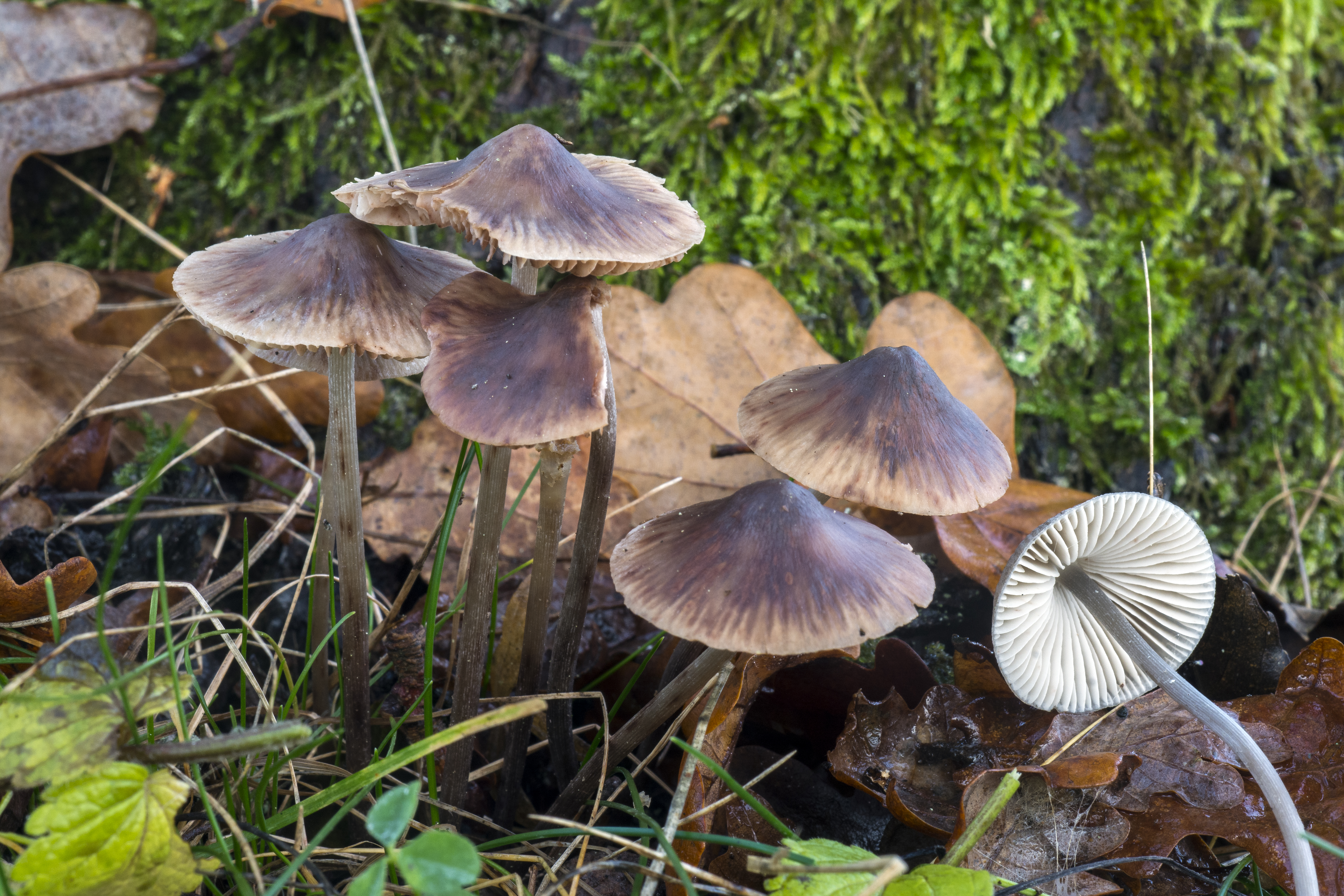Mycena algeriensis
Description
Cheilocystidia, spores and caulocystidia.
Cap 10-30 mm across, campanulate, convex, flattening with age, more or less with a low umbo, sulcate, translucent-striate, glabrous, somewhat waxy-shiny, hygrophanous, grey-brown to dark brown, blackish brown at the centre, the margin not or quite distinctly paler than the disk. Gills subdistant, ascending, narrowly adnate to adnate, fairly broad and thick, dorsally intervenose, greyish, becoming whitish and even flushed with flesh-colour or becoming reddish brown. Stem 30-90 x 1-3 mm, hollow, elastic-cartilaginous, straight to curved, somewhat widened towards the base, glabrous except for a pruinose apex, somewhat fibrillose in lower parts, grey-brown, to dark sepia brown, paler at the apex, pallescent on drying out, the base densely covered with whitish fibrils. Basidia 27-33 x 6.5-9 µm, clavate, 4-spored. Spores 7 - 10 x 4.5 - 7 µm, Q = 1.4-1.6, pip-shaped, smooth, amyloid. Cheilocystidia 55 - 103 x 9 - 23 µm, smooth, fusiform to lageniform, occurring mixed with the basidia. Pleurocystidia similar. Lamellar trama dextrinoid. Hyphae of the pileipellis smooth, embedded in gelatinous matter. Hyphae of the cortical layer of the stem smooth, caulocystidia 29 - 44 x 5 - 9 µm, clavate, smooth. Clamp connections present.
Ecology and distribution
Fasciculate to gregarious on decaying wood of deciduous trees. Autumn. Very rare in Norway.


